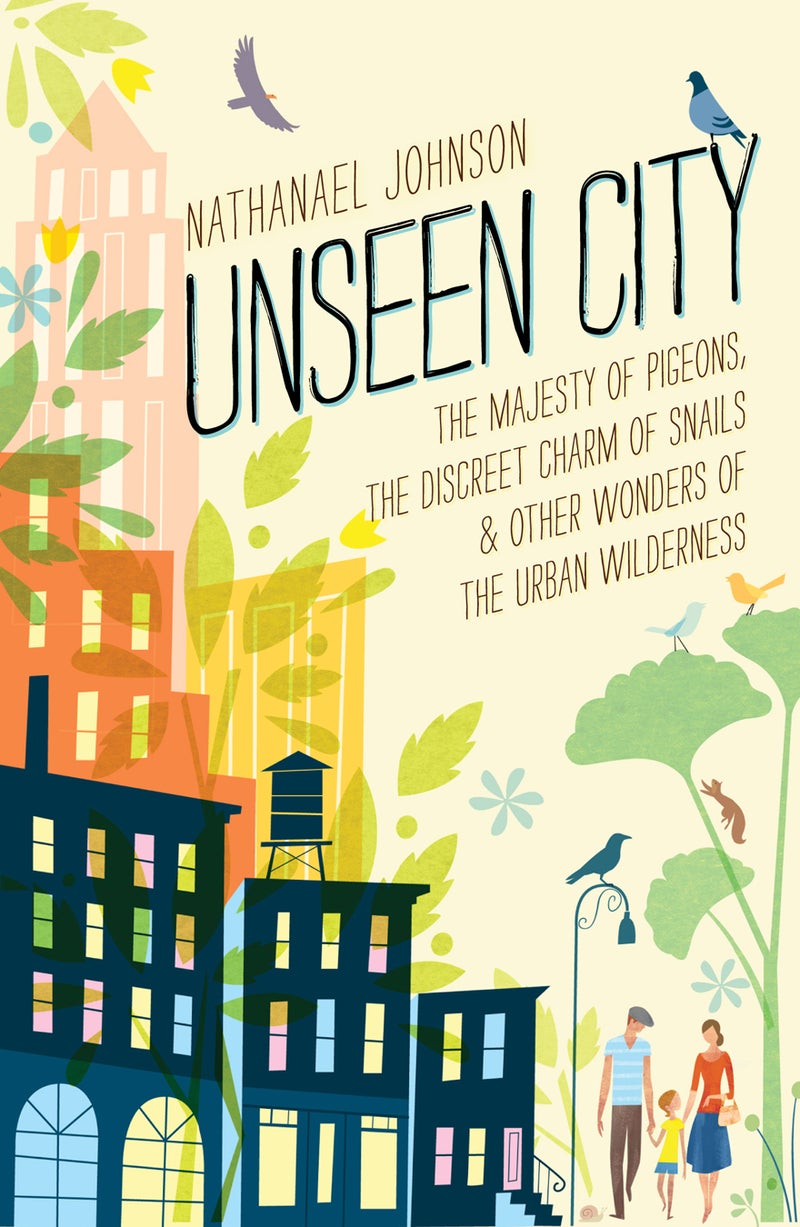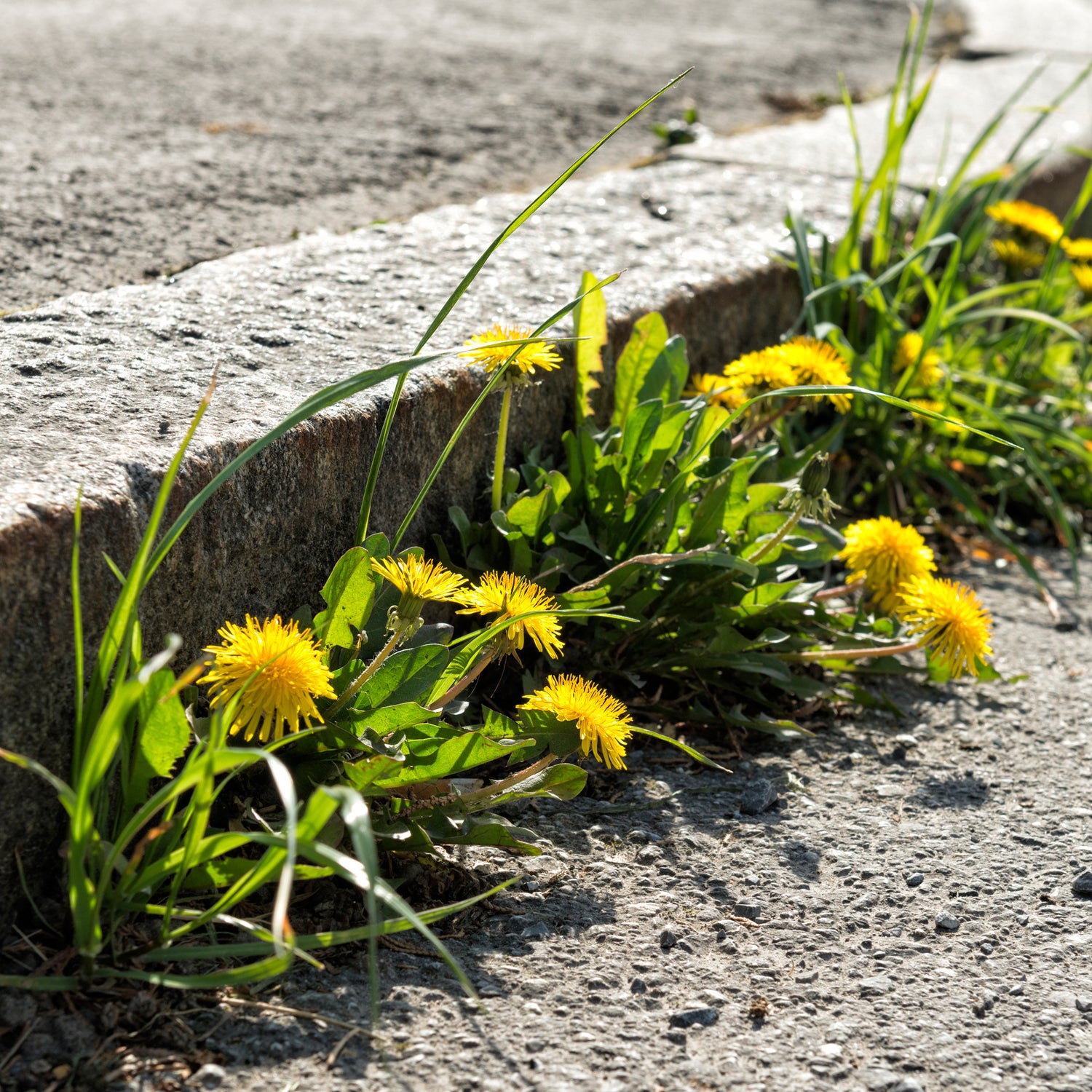I came to this study of edible plants with some skepticism about urban foraging. It seems to me that the sort of people who are excited about eating wild plants are also the sort given to the credulous acceptance of myths. There are three types of foragers in particular that bug me: the survivalists, the herbalists, and the taste-bud-less.
The survivalists are the ones with the misconception that they could someday subsist on plantain heads and dock leaves. If they were actually put to the test, most of these people would end up starving like Rebecca Lerner. She describes her experiment in eating only what she could gather in her book, . After a week of living off the land in Portland, she wrote: “My body was achy and limp. My legs were so weak that I had to brace myself against the wall like an old lady who lost her walker.”
Lerner eventually gave in and feasted on Thai food, noting, “There’s a thin line between badass and dumbass.”
The herbalists are the ones who insist on telling me that such and such is good for the liver, or will flush out my toxins. I’m a fan of alternative medicine, but when I’m trying to learn something I like my information to be evidence based. But when someone tells me earnestly that echinacea cures colds (even though I know it’s been studied to death and ultimately looks like a good placebo), it makes me doubt everything else I’m learning from them.
Then there’s the taste-bud-less: The folks that munch on tough old dandelions and proclaim them delicious. As Tama Matsuoka Wong writes in her book, , “It was pretty easy to find nature-oriented books that told me which of these plants are ‘edible,’ but my quest instead was for plants that actually taste good” (her italics). One of the books in the vein is , coauthored by Alfred C. Kinsey; it contains a comprehensive listing of species, but doesn’t tell you what to do with them. The same might be said, incidentally, of Kinsey’s more famous reports on human sexuality, which include plenty of facts, but no advice for the lay reader on putting them into practice.
There’s a touch of apocalyptic asceticism in many of the guidebooks I’ve leafed through. They carry the implication that, come the revolution, there will be no place for those who hesitate to scarf down hairy bittercress.
There are lots of plants that the experts advise you to boil three times in three different batches of water, i.e., things you’d only eat if you were starving. The highest praise in many guides is mildness, the ability of a plant to pass through your mouth undetected. The foraging literature frequently ignores flavor, and there’s a touch of apocalyptic asceticism in many of the guidebooks I’ve leafed through. They carry the implication that, come the revolution, there will be no place for those who hesitate to scarf down hairy bittercress.
But we shouldn’t let the three breeds of hyperbolic foragers out there spoil what, done right, can be a truly good thing. The existence of survivalists, herbalists, and the taste-bud-less did nothing to stint the pleasure I got from foraging as a kid: In the Sierra foothills my friends and I would eat blackberries, pine nuts, and manzanita flowers in the spring and their powdery, sunbaked berries in the fall. We never expected to fill our bellies on this stuff, but it felt good to know it was there, to be able to find the landscape’s sweetness, and to think of the previous civilizations that had foraged there.
Experienced foragers understand that you can’t actually survive on wild salads alone: It’s fruits, nuts, seeds, roots, and meat that provide the calories. Lerner eventually finds her foraging groove, and with the help of a small village of friends, assembles a Thanksgiving feast. She writes, “It was an impressive display: rose hips sauce, roasted cattail, nettle, mushrooms, wapato, venison, scones, and even wild beer.”

I’d be pleased to get that at a fancy San Francisco restaurant. And of course, the finest restaurants are serving foraged weeds already. , the New York eatery with two Michelin stars, and Copenhagen’s , often called the best restaurant in the world, both rely on foraged foods, tapping the flavors and textures of things people normally don’t think of as food.
The success of those restaurants renewed my interest in foraging. I don’t want to be the sort of guy who tries to make his family eat “actually, starvation sounds pretty good right now” salads. But Wong, who forages for Daniel, has published a book full of recipes for and advice on turning weeds into high cuisine, which kindled my hope that I might make meals a little more delicious with a touch of the wild.
We’ve reached a strange point in history when foraging, once a stopgap for the desperately poor, is now firmly associated with upper-class food—so much so that it’s impossible to say you are serving, for example, foraged sheep sorrel or wild fennel sprigs without sounding a bit pretentious. This is bizarre: I can’t afford to eat at either Daniel or Noma, but wild plants are free.
Eat Your Yard
There’s an effort at the University of California, Berkeley, to connect the people with the least money to the highfalutin ingredients growing in the cracks in their driveways. Philip Stark, a Berkeley statistics professor, organized a team of researchers to map edible plants in low-income neighborhoods with the goal of creating a Web site that will show residents how to find food close to their homes.
In the United States, poverty is highly correlated with obesity and diet-related disease. If poor people actually found it feasible to eat foraged greens, the public health benefit could be immense. And incidentally, the places labeled food deserts—low-income neighborhoods without markets—are also the places where Stark is finding the most edible weeds. “The hypothesis is that the food is already there,” he said. “It’s just not recognized as food.”
I asked Stark if I could tag along with him sometime when he went out looking at plants, which he said he does nearly every day. We met at his home in the Berkeley hills and strolled the winding roads.
Incidentally, the places labeled food deserts are also the places where Philip Stark is finding the most edible weeds. “The hypothesis is that the food is already there,” he said. “It’s just not recognized as food.”
A walk with a forager is not leisurely. Stark did not gaze at the vistas or remark on the architectural details of the houses we passed. Instead, he stared intently at the margins of the road, and regularly broke off in midsentence to dash to one side or the other to inspect something green and nondescript. He is tall, lean, and balding, with close-shorn hair about the length of the stubble on his cheeks. He wore sandals—a simple sole attached to his foot with leather laces—loose gray pants, and a rust-orange Arc’teryx windbreaker. He rattled off Latin and common names faster than I could write them down. “Lactuca virosa,” he said, squatting and plucking a hairy leaf. “Opium lettuce, or bitter lettuce.” He put it in his mouth and chewed. I did the same. It was bitter, not overwhelmingly so, but also not something I’d want to eat in bulk. “I actually quite like things with stronger flavors,” Stark said. He’ll use a bitter leaf or two like a spice, to punctuate an otherwise conventional omelet or piece of meat.
A little farther on we came to a sloping triangle of dirt between a driveway and the road. Stark began listing the edible species there. “Bristly oxtongue, curly dock, miner’s lettuce, mallow, fennel, chickweed, sow thistle, cow parsnip, wood sorrel, nasturtium—here’s a ten-ingredient salad, more than you could get in a mixed-mesclun bag at the farmers’ market. And it’s free.”
On the second day of official fieldwork for the project, Stark told me, he and his compatriots bumped into another team looking for precisely the same plants. It was a team of city workers in haz-mat suits spraying herbicide to kill the greens. They were in West Oakland, home to a lot of people whose diets would surely be improved by eating those weeds. Here were two problems—people in need of free healthy foods and weeds in need of removal—that might be resolved with a single solution.
There are still issues to sort out. First, is it safe to eat greens growing amid paint chips, auto exhaust, dog piss, and the mysterious fallout of urban grime? Second, will the people who most need more greens in their diet have the time to forage for, wash, and cook them?
Stark is running a battery of tests to answer the first question. Plants do absorb pollutants, but it’s unclear if they take in enough to cause concern. The second question is tougher. Foraging makes perfect sense if you are cash poor and time rich. But it makes no sense when you’re working three jobs and still broke. Several attempts to fix food deserts have failed because the problem isn’t simply that people lack access to vegetables; they also may not have the skills to make them delicious, or the time to prepare them.
Reprinted from by Nathanael Johnson Copyright (c) 2016 by Nathanael Johnson. By permission of Rodale Books. Available wherever books are sold.


